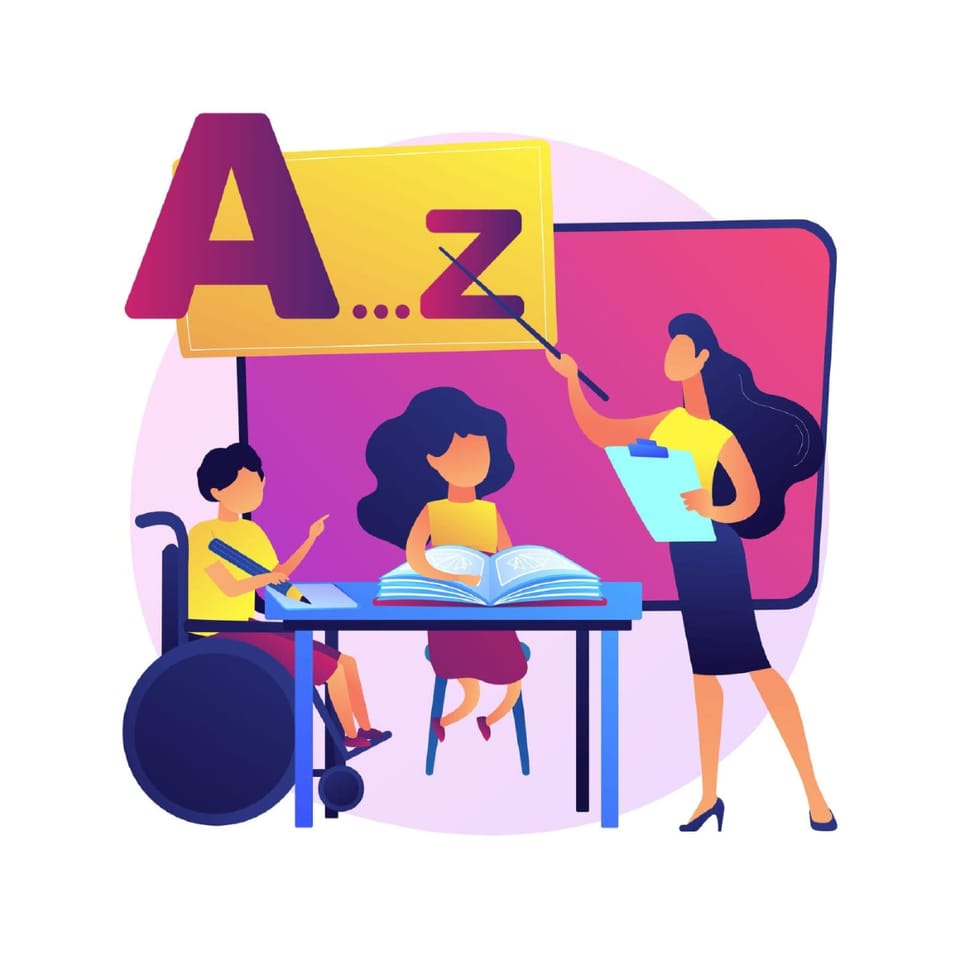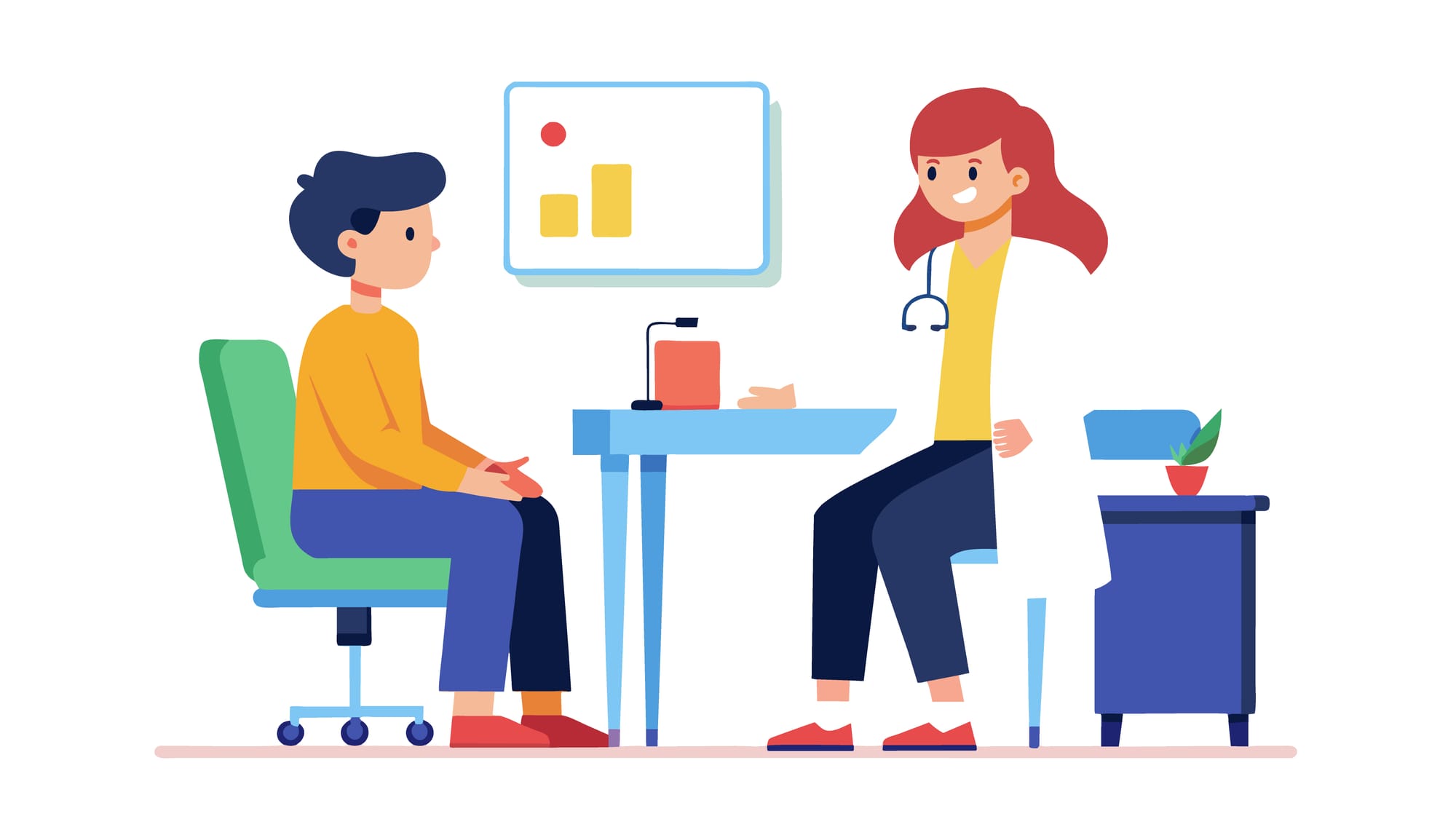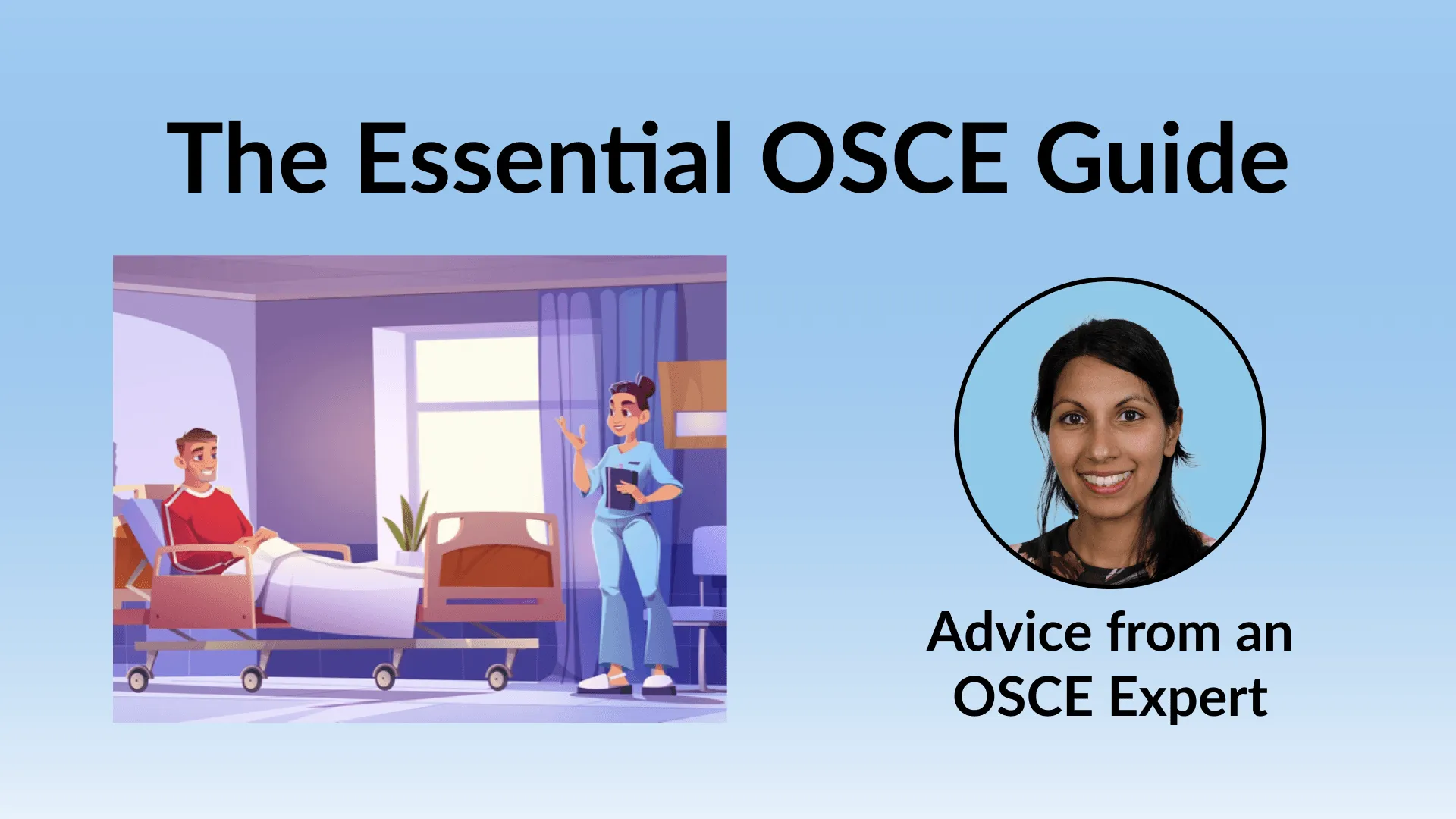Communicating with Patients with Learning Disabilities

The General Medical Council (GMC) outlines that as healthcare professionals, we must make reasonable adjustments for our patients depending on their individual needs (1).
It is known that patients with learning disabilities face poorer health outcomes. This may be for a number of reasons, including missed or delayed diagnoses. Sadly, much of this healthcare disparity stems from poor communication from healthcare providers (2).
Through my clinical work and from working closely with actors with learning disabilities, I have written this article to focus on how to effectively communicate with patients with learning disabilities in clinical settings.
What is a Learning Disability?
Mencap UK (2), is an organisation that campaigns for the rights and inclusion of people with learning disabilities. Their definition of a learning disability is as follows:
"A learning disability is a reduced intellectual ability and difficulty with everyday activities—for example, household tasks, socialising, or managing money—that affects someone for their whole life"(2).
"People with a learning disability tend to take longer to learn and may need support to develop new skills, understand complicated information and interact with other people"(2).
It is not uncommon that people with learning disabilities, also have a number of other medical conditions, for example, Down syndrome, rare chromosomal disorders, cerebral palsy and autism, to name a few. It is important to recognise that there is a large spectrum of impairment from mild to profound and we must factor this into how we communicate with these patients.

Often, the terms learning difficulty and learning disability are confused. A learning difficulty is a disorder that affects a person's ability to learn, such as dyslexia, dyscalculia, and attention deficit hyperactivity disorder (ADHD). People with learning difficulties do not necessarily have a learning disability. For example, they might struggle with spelling words correctly but have an Intelligence Quotient (IQ) within the normal range. Whilst, a person with a learning disability may also have learning difficulties, but not always.
Understanding the Challenges
Patients with learning disabilities may face numerous challenges in accessing healthcare services and communicating with healthcare providers. Some of these include:
Communication barriers
- Speech and language impairments, as well as sensory deficits.
Limited health literacy
- Difficulty understanding medical terminology and complex healthcare information.
Cognitive limitations
- Difficulty processing information, making decisions, and recalling instructions.
Stigmatisation and discrimination
- There may be a reluctance to seek care and mistrust of healthcare providers due to negative attitudes and stereotypes within the healthcare system.
Lack of advocacy and support
- Many patients with learning disabilities may lack adequate support systems or advocacy to navigate the healthcare system effectively.
Taking Histories from Patients with Learning Disabilities

When taking a medical history from a patient with a learning disability, the starting point is to remember that all the core communication skills we are already familiar with come into play, but these are more nuanced to the patient's individual needs.
Below are examples of core skills that we aim to use with all our patients for effective communication. I've added some modifications in italics to highlight how we might adapt these when speaking to someone with a learning disability.
Building rapport
- Having a friendly approach from the outset is important to help build trust and rapport with our patients.
Patients with learning disabilities generally require more frequent contact with healthcare professionals than the general population. Where possible, they benefit from being seen by clinicians they are already familiar with.
Questioning style
- Open-ended questions generally help to develop rapport and elicit the history in a patient-centred way e.g. "Can you tell me more about that?"
- Closed questions (yes/no answer questions) might be needed to answer specific questions, but we generally avoid using them for the bulk of our consultations, as they are less patient-centred and focus more on the clinician's agenda.
Whilst we would always aim to start by using open questions, with patients with learning disabilities, we may need to rely more on closed questions than we are used to, as these patients may require a more directive approach.
- Avoid using multiple questions, such as "Do you have any abdominal pain, nausea, or vomiting?" Patients are likely to answer only part of these questions if asked like this.
- Avoid leading questions, e.g. "You don't have any chest pain, do you?"
- We should avoid the above two questioning styles with all patients.
Pacing
Pacing is important to allow patients the time to comprehend our questions and also assists with our demonstration of empathy because it gives patients the sense that we have time for them.
- It is important to adjust the pacing of questions (generally slowing down) and leave enough time for patients with learning disabilities to process them. We should also aim to give adequate time and space for patients to complete their answers before asking a follow-up question; patients with learning disabilities may need more time here than we anticipate.
Active listening & cue finding
- Active listening shows you are engaged in the conversation and gives you opportunities to notice patient cues.
- Remember that cues could be verbal or non-verbal, it is important to explore these as they arise.
Empathy
- This can be demonstrated in many ways through tone, pace, empathic statements and body language. See my article on empathy for a full breakdown of all the different ways you can demonstrate empathy.
Signposting
- This is a way to signal a change in the focus of the consultation or potentially when discussing sensitive topics. Signposting helps to provide a good structure and flow to consultations, this enables patients to more easily follow the conversation.
You may wish to increase the use of signposting when seeing patients with learning disabilities, as it can give these patients additional time to shift their thinking onto the new area of focus.
Summarising
- Summarising allows opportunities to check the information that has been gathered is correct.
Exploring patient perspectives
This includes establishing the patient's ideas, concerns, and expectations. It is also helpful to explore the impact of the symptoms/condition/treatment plan on the patient's life. If you want more help with how to do this well, see my full article on patient perspectives.
Giving Information to Patients with Learning Disabilities

Many of the skills discussed in the history-taking section also apply to information giving, e.g. cue finding, demonstrating empathy, signposting and summarising. In addition, a few other skills can be utilised.
Below, I've given some practical guidance and areas to consider when giving medical information to patients with learning disabilities.
Setting up the consultation
- Ensure you have a longer appointment (if this is possible).
- Build rapport (again it is best if the patient can see a clinician they are familiar with).
- Check if the patient would like a carer or advocate to be present.
- Assess for additional barriers to effective information giving e.g. sight or hearing impairment.
- Assess the patient's understanding so far. For example, what do they know about why they have come in? Are they awaiting a test result?
- Signpost key discussions.
Discussing a new diagnosis or treatment plan
- Treat patients as individuals, remember there is a lot of diversity across this demographic.
- Make no assumptions about capacity and the level of understanding.
- Tailor the amount and depth of the information given to the patient’s needs.
- Provide information in small chunks.
- Provide enough information so the patient can make informed decisions.
- Use simple terminology/ Avoid or explain any medical jargon.
- Use visual aids/ larger fonts / alternative means to aid understanding.
- Depending on the patient, the use of analogies may be helpful or may cause further confusion.
- Ensure clarity of speech.
- Be mindful of pace. Avoid rushing, as this may be particularly challenging for these patients. Actively check in with the patient to see if they would like you to slow down. I recall being in a learning disabilities teaching session where a student had made a noticeable effort to slow down. Despite this, the feedback from her simulated patient was that she was still talking too fast. Note that going too slowly may come across as patronising, so there is a fine balance to be struck.
- Provide sufficient silence and pauses; to allow the patient enough processing time.
- Demonstrate empathy (through tone, empathic statements, responding to emotions and demonstrating patience).
Do your best to help the patient understand and retain the information

- Pick up on patient cues. Look out for verbal and nonverbal signs of confusion or other emotional responses e.g. fear. Try to adjust your pace and/or the wording to see if the patient can better understand the information you are trying to provide.
- Repeat information if needed.
- Check if the patient has questions.
- Summarise key information.
- Check if the patient has understood. We might need to check understanding more frequently when giving information to patients with learning disabilities. Again, it is important to do this according to the patient's needs by picking up on the patient's cues and adapting accordingly.
- Ask the patient to summarise back to establish their understanding. Remember that unless we do this, we don't fully know what the patient has understood.
Assess capacity
- Has the patient demonstrated they are able to understand, weigh up the information and communicate their decision to you?
- Do they need or want help from their caregivers with any decision-making?
- Does the patient have an appointed power of attorney to help them make decisions about their health?
Close the consultation
- Offer safety netting advice, e.g. what should the patient do in the worst-case scenario e.g. if the treatment plan doesn't work.
- Check the patient and or carer has understood the safety netting advice.
- Provide follow-up information that is appropriate for the patient, e.g. an appointment, leaflets or websites, etc.
How to Communicate with Nonverbal Patients

Communicating effectively with non-verbal patients requires further special consideration. Non-verbal communication encompasses a variety of methods beyond spoken language, including gestures, facial expressions, body language, and assistive communication devices. Here are some key strategies you can use to enhance your communication with non-verbal patients:
Establish communication channels
- Begin by assessing the patient's preferred method of communication. Some non-verbal patients may use alternative communication methods such as sign language, communication boards, or augmentative and alternative communication (AAC) devices.
- Work with the patient and their caregivers, to identify the most effective means of communication.

Observe and interpret non-verbal cues
- Pay close attention to the patient's non-verbal cues, including facial expressions, gestures, and body language, to understand their emotions, needs, and preferences. For example, do they appear to be in pain or distressed?
- Be patient and attentive, and allow the patient ample time to express themselves through non-verbal means.
Use visual aids
- Utilise visual aids such as pictures, symbols, or written instructions to enhance understanding and facilitate communication.
- Use communication boards to help non-verbal patients express their preferences, communicate their basic needs, and participate in decision-making.
Encourage interaction
- Encourage non-verbal patients to participate in communication by offering choices, asking yes/no questions, or using prompts to elicit responses.
Respect personal space and boundaries
- Explicitly, seek consent before initiating physical contact, e.g. to carry out an examination and be mindful of the patient's comfort level and how they express this throughout.
Collaborate with carers & health advocates
- Engage with caregivers and or family members who are familiar with the patient's communication needs and preferences.
- Where possible collaborate with speech therapists, occupational therapists, or other specialists to develop personalised communication strategies and interventions.
Build rapport and trust
- Establish a trusting and supportive relationship with the patient by demonstrating empathy, patience, and respect.
Advocate for accessibility
- Advocate for accessible communication resources and accommodations within healthcare settings to ensure equal access to care for non-verbal patients.
In summary, effective communication with non-verbal patients requires sensitivity, creativity, and collaboration. By understanding and respecting the unique communication preferences and capabilities of each individual, healthcare professionals can facilitate meaningful interactions and provide person-centered care to this group of patients.
Tips on Working with a Carer or Healthcare Advocate
If a patient is dependent on a carer or advocate, it is important to always keep the patient involved in the conversation. We can still build rapport with the patient through maintaining good eye contact, picking up and responding to cues and talking to them directly. Many patients I've met with learning disabilities have stated that they frequently feel left out from conversations with their healthcare providers because questions are often directed only to their carers. They also often feel their level of understanding is misunderstood by healthcare providers because they have a carer and find it difficult to challenge this.

The Importance of the Social History
It is always helpful to understand the social context of patients with learning disabilities e.g.
- Where does the patient live?
- Do they live with anyone?
- What is their home setup like?
- Are they independent in their daily activities, such as washing, dressing, cooking, cleaning, managing finances, etc.?
- Do they have assistance, e.g. carers, family or friends?
- What other services are they known to, e.g. social services or local clubs?
- Do they work? (Many of my students have wrongly presumed that patients with learning disabilities do not work and avoid asking this in the history, try to challenge your own assumptions).
- How is their diet? Are they well-educated about healthy eating?
- Are there other areas of the social history that could be affecting their health, e.g. smoking, alcohol, sexual health and recreational drug use? Are they well-informed and aware of any associated risks?
Remember, patients with learning disabilities can be vulnerable in many ways, and this is another reason why it is important that we get as full a picture as possible of their social life.

Summary
- Patients with learning disabilities may have complex medical histories and potentially many barriers to communication.
- As clinicians, it is our duty to make reasonable adjustments to assist all our patients.
- If we want to close the gap in healthcare disparities for patients with learning disabilities, we must adapt our communication strategies to meet their individual needs.
Practise Exercises

Consider how you might approach the following areas with a patient with a learning disability. How could you explain the medical terms? What types of visual aids and prompts might you use?
- Discussing a clinical procedure, e.g. a lumbar puncture, colonoscopy or an operation.
- Discussing a common medical condition, e.g. hypertension, diabetes or chronic obstructive airway disease (COPD).
- Discussing an abnormal test result e.g. a blood test, x-ray or scan result.
- Discussing a management plan, e.g. initiating metformin, an antihypertensive or a statin.
References
- www.gmc-uk.org/professional-standards/professional-standards-for-doctors/good-medical-practice/domain-2-patients-partnership-and-communication#introduction-27FA47172D2D40AFBEC1F83E1C20866B
- www.mencap.org.uk/
OSCE Course
If you liked this article, take a look at my OSCE course. I have broken down how to tackle different types of OSCE stations and included all my top examiner tips and advice. This is what I cover in the course:
- How to Prepare for OSCEs
- History Taking
- Information Giving
- Clinical Examinations
- Procedural Skills
- How to Effectively Summarise
- How to Answer Examiner Questions
- Worked Examples
